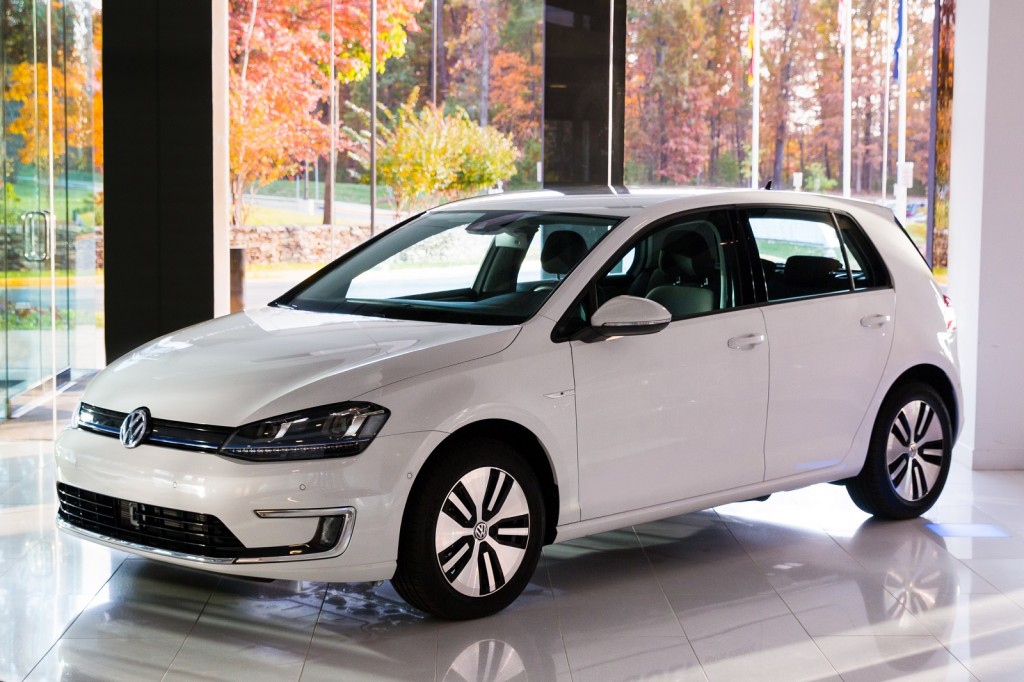
2015 Volkswagen e-Golf
The reality of range—reproducible, real-world daily-driving range—is one of the most important concepts you have to become familiar with if you’re new to electric vehicles.
Generally speaking, the faster you drive, the quicker you accelerate, and the more accessories (like climate control) you use, the more energy you consume.
But the interface plays an especially important role in how much of the range you use. Each EV has its own way of anticipating the number of miles you have left at any point of battery charge—sometimes optimistic then revisionist, other times surprisingly linear, accurate, and confidence-building.
Our long-term 2015 Volkswagen e-Golf landed soundly in the latter group. Its gauge cluster and trip computer unfailingly suggested a remaining range that was maybe slightly less than what was actually remaining, and nearly as linear as a fuel-range estimation for a gasoline car.
![2015 Volkswagen e-Golf - Long-term test car [November 2015] 2015 Volkswagen e-Golf - Long-term test car [November 2015]](https://images.hgmsites.net/lrg/2015-volkswagen-e-golf--long-term-test-car_100536850_l.jpg)
2015 Volkswagen e-Golf - Long-term test car [November 2015]
It helped us have confidence in the e-Golf’s range, as we quite easily got more than 80 miles of charge in most year-round driving conditions—and in many cases, a lot more.
The test e-Golf had a 24.2-kwh battery pack and was EPA-rated at 83 miles of total range; but the entire time, that seemed conservative.
A very conservative 83-mile rating
Looking back at nearly 2,700 miles of all-electric motoring, the longest distance we saw on a full charge was 108 miles—and at that point the trip computer still anticipated 3 miles remaining (the turtle symbol had illuminated in the gauge cluster and the drivetrain was severely limiting power at that point).
We reached this top end for driving range, of around 110 miles, at least two other times—when we’d used the climate control lightly, and driven carefully at city speeds.
The lowest range we saw when waiting as long as we comfortably could before plugging back in was 58 miles—during a cold snap just below 30 degrees F, with the heat and heated seats on, with most of the charge spent on the highway, at around 70 mph.

Volkswagen e-Golf charge gauge
We topped 100 miles on a single charge six times with the e-Golf—nearly all of those times in warm, sunny weather, around town, with windows down and no climate control. If we hadn’t plugged in when convenient, we could have pushed the range higher a number of additional times.
Much more efficient in the city
The e-Golf’s EPA ratings factor in at 116 MPGe (miles per gallon equivalent), with 126 MPGe in the city cycle and 105 MPGe highway. That EPA combined rating equates to 29 kWh per 100 miles.
That works out to 3.74 miles per kWh in city driving or 3.12 miles per kWh on the highway.
It turns out our observed efficiency with the e-Golf is almost exactly that. Over nearly 2,700 miles with the e-Golf (probably all but about 300 miles spent in city driving) we saw an average of 3.7 miles per kwh, according to the weighted average of three stretches with the trip computer (one reset accidentally, the other when we brought the vehicle in for service).
At the approximately 14 cents per kilowatt hour that we pay in Portland, Oregon, after taxes, fees, and recurring charges, that’s less than 4 cents per mile, or about $100 of electricity, at household prices, to go the entire distance.
Or even factoring in the higher rates of around 30 cents per kwh paid in some parts of the country—like Hawaii, or New York City, that’s still less than 8 cents per mile.

Volkswagen e-Golf on Car-Net app - efficiency histogram
Over shorter stints, when the weather was especially mild, or when we were doing mainly low-speed city driving, we routinely saw higher trip efficiency averages of 4.1 to 4.4 miles per kwh.
Through the Car-Net app, which arranges our efficiency history in handy histogram form, on a trip-by-trip basis, we saw as low as 2.3 mi/kw and as high as 5.1 mi/kw.
Building confidence...and range
Generally speaking, the more time you spend with a pure electric car, the more confidence you have in using all of its available range.
There’s one big asterisk to our experience already: the e-Golf’s range is growing. For 2017, Volkswagen is upgrading the e-Golf’s battery pack to 30 kWh. Thanks to various battery improvements, one of which is the upgrade of the battery cells from 28 amp-hours to 37 amp-hours, that 24-percent capacity increase will actually bring a 30-percent range increase—which could mean 108 miles, although an official EPA rating hasn’t yet been released.
We genuinely hope Volkswagen keeps the e-Golf’s range predictions as they are, and overdelivers with this enhanced model in much the same way. Check back for some updated impressions (and our take on how driving range compares) as soon as that model arrives.
_______________________________________













